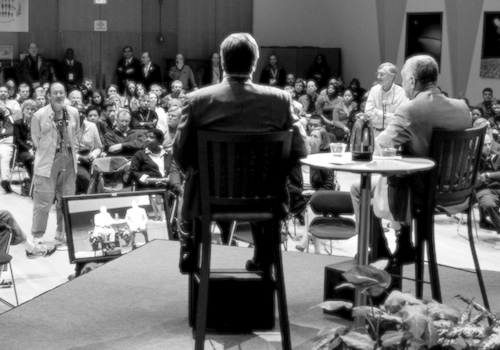
Dr. Megan MacBride, Taconic's Associate Director of Scientific Marketing, examined how super immunodeficient models such as the NOG mouse fit into the universe of available immunodeficient mice for use in oncology research. Growth in use of the NOG mouse has been driven in part by increased use of patient-derived tumorgrafts (PDX). She discussed best practices for selection of a xenograft host and made recommendations for various experimental paradigms.
The topic of cell and tissue humanized mouse models was discussed by Dr. Leon Hall, Taconic's Director of Preclinical Models and Services. Dr. Hall introduced key humanized immune system models including the huNOG, huPBMC-NOG and BLT-NOG. Practical experimental considerations were addressed, and application of these humanized models to oncology research was highlighted.
Dr. Takeshi Takahashi joined the symposium from Japan, where he is in charge of developing improved humanized immune system models at the nonprofit Central Institute for Experimental Animals (CIEA). Dr. Takahashi reviewed the latest data from his laboratory, including work using next generation NOG models. These next generation NOG models include strains based on the NOG mouse with further genetic modifications, such as transgenic expression of human cytokines. Data was presented on development of human NK cells in hIL2-NOG and hIL15-NOG mice and improved myeloid cell development in the hGM-CSF/hIL3-NOG strain in addition to other next generation models.
A round table discussion hosted by CIEA's Dr. Mamoru Ito, inventor of the NOG mouse, brought together all of the speakers to address questions posed by the audience. Audience members were clearly interested in how to integrate humanized immune system mouse models to their existing research programs.
 View the Humanized Mice White Papers:
View the Humanized Mice White Papers:
















.jpg)

.jpg)
.jpg)
.jpg)
.jpg)





.jpg)


.jpg)
.jpg)




.jpg)




.jpg)

.jpg)



